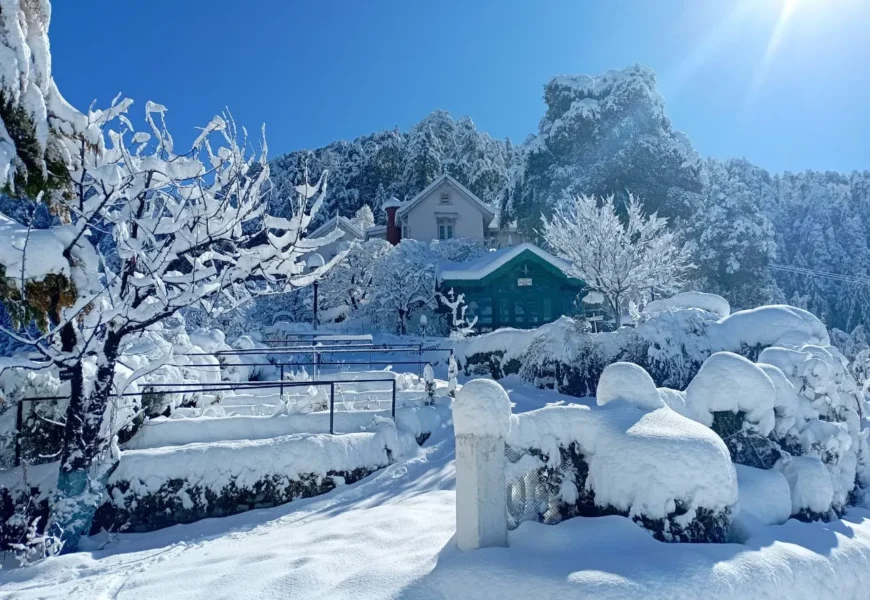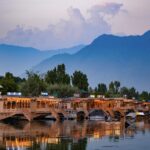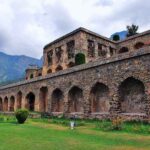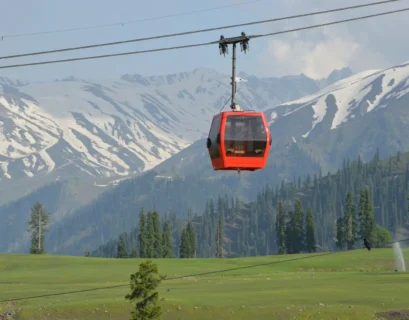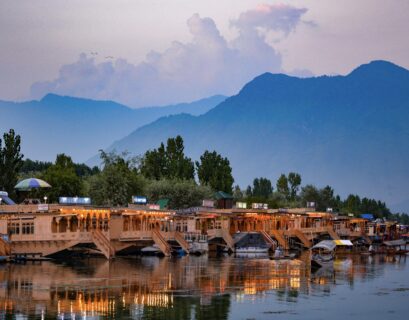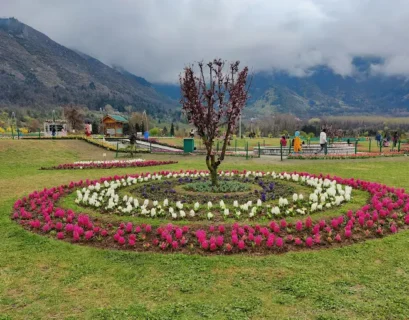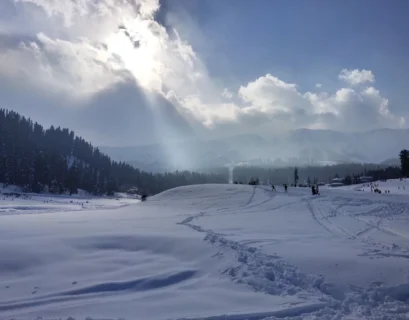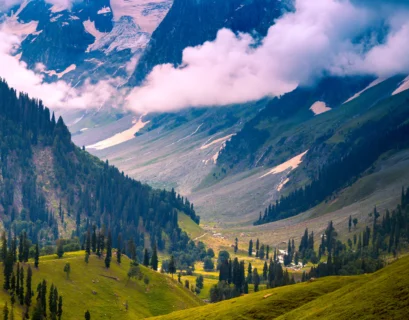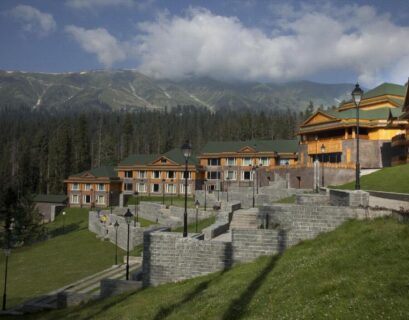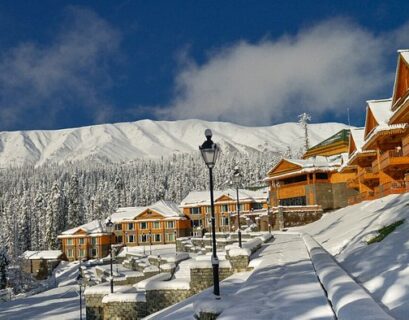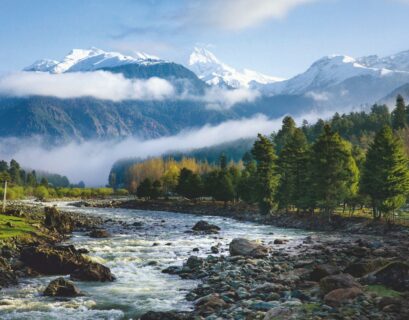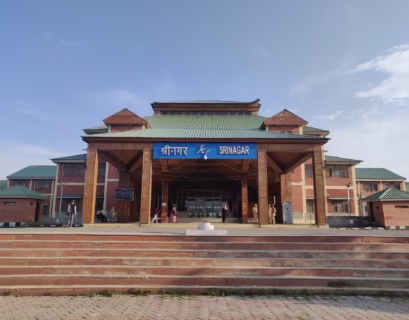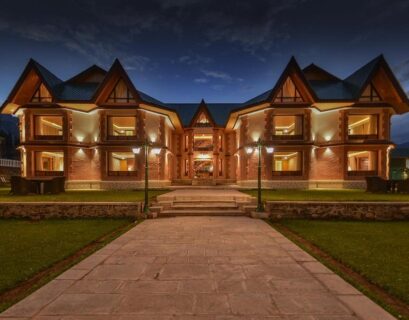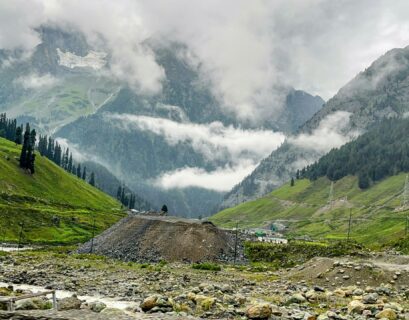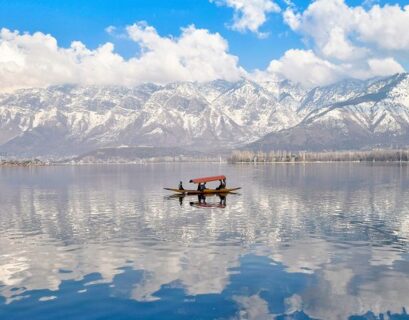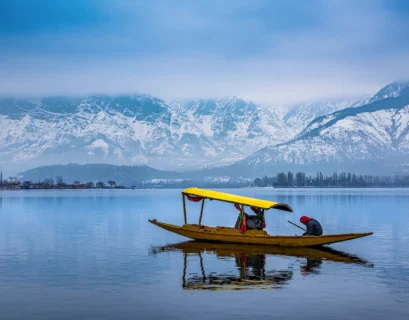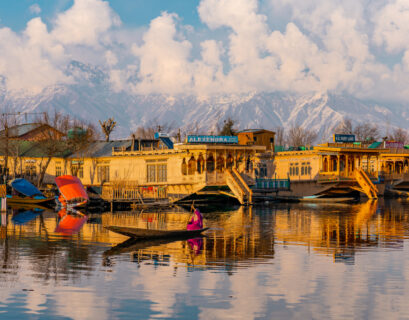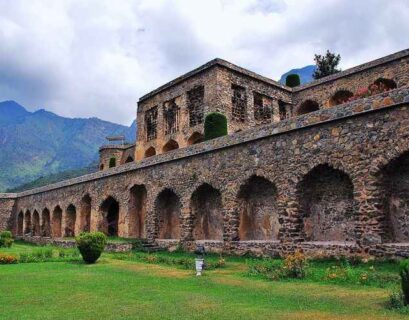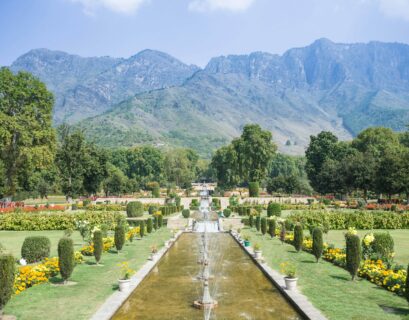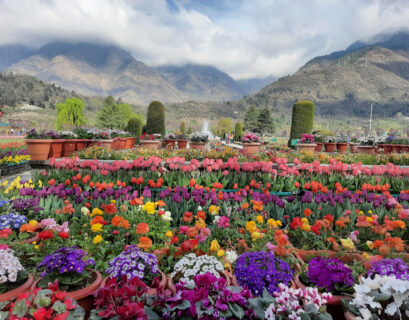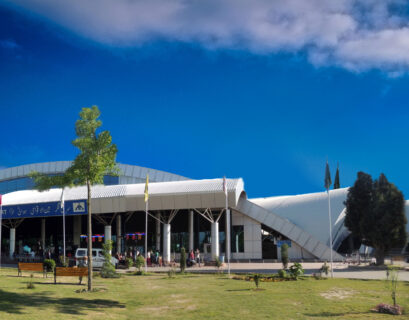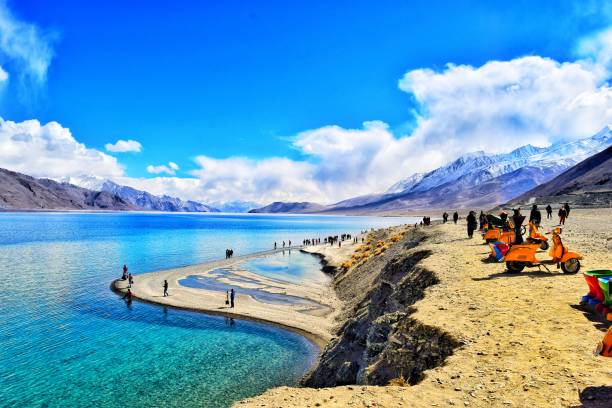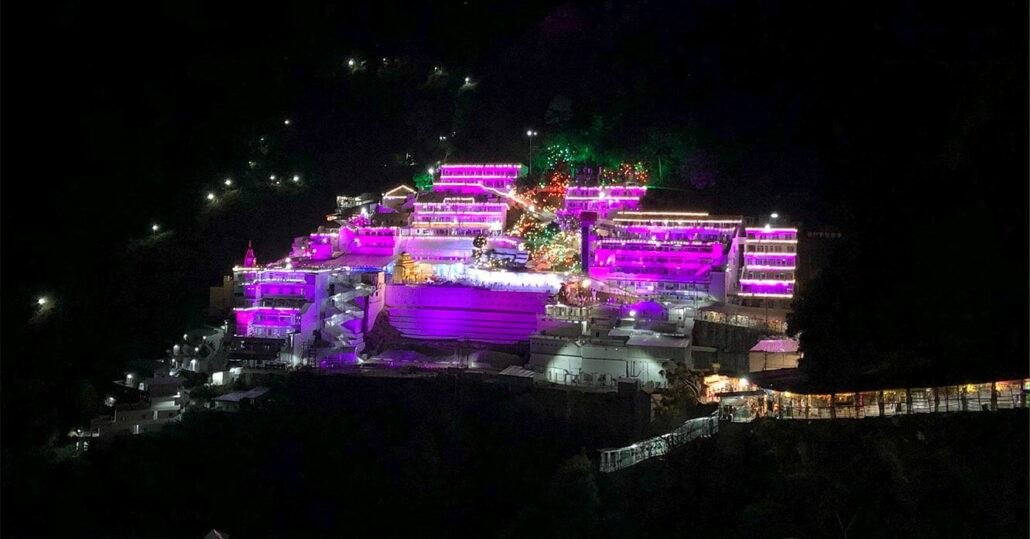Table of Contents
TogglePlaces to Visit in Kashmir Photos
Everything About Places to Visit in Kashmir
Kashmir, often described as “Heaven on Earth,” has enchanted travelers for centuries with its pristine landscapes, rich cultural tapestry, and a history steeped in legends. Nestled in the lap of the majestic Himalayas, this region offers a unique blend of natural beauty, warm hospitality, and vibrant traditions. In this blog, we take you on a journey to discover the most captivating kashmir tourist places. Whether you’re a nature lover, history enthusiast, or a seeker of tranquility, our comprehensive guide to places to visit in kashmir is designed to inspire your next adventure.
The Timeless Beauty of Kashmir
Kashmir’s charm lies in its diverse scenery—from shimmering lakes and sprawling meadows to rugged mountains and lush valleys. The mesmerizing landscapes have attracted countless travelers over the years and continue to make kashmir tourism a must-experience journey. What sets Kashmir apart is the seamless blend of natural wonders with an intricate cultural heritage that invites visitors to experience both serenity and exhilaration.
A Kaleidoscope of Nature
Imagine waking up to the sight of snow-capped peaks reflected in a calm lake, or witnessing a breathtaking sunset over terraced fields. The region’s natural allure is not just about the views; it’s about experiencing the outdoors. From trekking through enchanting forests to savoring the cool mountain air, every moment in Kashmir is an invitation to reconnect with nature.
The Cultural Mosaic
Kashmir’s rich history is etched in its ancient architecture, handicrafts, and the soulful music of its people. The region’s heritage tells tales of centuries-old traditions, making it a living museum where every corner holds a story. Local festivals, exquisite cuisine, and time-honored artisan skills all contribute to the enduring mystique of Kashmir.
A Journey Through History and Culture
Before you embark on your tour of the best places to visit in kashmir, it’s essential to appreciate the historical and cultural narratives that shape this region.
Historical Legacy
Kashmir has been a melting pot of various civilizations—Persian, Central Asian, and South Asian influences have all left their mark on the region. The remnants of ancient dynasties, majestic mosques, and Buddhist stupas are scattered across the valley, offering glimpses into a bygone era. Visitors can explore historical landmarks that serve as a testament to Kashmir’s enduring legacy.
Rich Art and Handicrafts
One of the highlights of kashmir famous places is the region’s vibrant arts scene. Kashmiri handicrafts, from intricately woven pashmina shawls to hand-knotted carpets, are renowned worldwide. These crafts not only represent the artistic spirit of the locals but also the historical traditions passed down through generations. Exploring local bazaars offers a chance to take a piece of Kashmir’s heritage home with you.
Spiritual Sanctuaries
Kashmir is dotted with shrines and temples that provide spiritual solace and architectural splendor. These sacred sites, often nestled amidst serene landscapes, invite visitors to pause, reflect, and find inner peace. Whether you’re drawn to Sufi mysticism or Hindu spirituality, the spiritual legacy of Kashmir is deeply interwoven with its cultural fabric.
Geographical Wonders: A Land of Diversity
The topography of Kashmir is as diverse as its cultural heritage. The region boasts a myriad of geographical features that offer something for every traveler.
Majestic Mountains
The towering Himalayan peaks form a dramatic backdrop to the valley. These mountains not only add to the visual grandeur of the region but also serve as a haven for adventure enthusiasts. Trekking, mountaineering, and skiing are popular activities that allow visitors to embrace the rugged beauty of these natural fortresses.
Pristine Lakes and Rivers
No journey to Kashmir is complete without experiencing its famous lakes and rivers. The pristine Dal Lake, with its houseboats and shikaras, stands as an iconic symbol of the region. In addition, numerous other water bodies add to the charm, providing serene settings for boating, fishing, or simply unwinding by the water’s edge.
Lush Valleys and Meadows
The verdant valleys of Kashmir, with their vibrant wildflowers and sprawling meadows, are a haven for nature enthusiasts. These landscapes change dramatically with the seasons, from a riot of colors in spring to a snowy wonderland in winter. This seasonal transformation makes the valley a year-round destination, ensuring that each visit offers a unique experience.
Top Tourist Attractions: A Comprehensive Kashmir Tourist Places List
When planning a trip, having a well-curated kashmir tourist places list is invaluable. Here, we delve into the destinations that make Kashmir a top-rated travel destination.
Dal Lake – The Jewel of Srinagar
Dubbed the “floating paradise,” Dal Lake is perhaps the most iconic attraction in Kashmir. A boat ride here offers not just panoramic views of the surrounding mountains but also a glimpse into the traditional lifestyle of the locals. Houseboats and shikaras provide a unique experience, making it one of the best tourist places in kashmir.
Gulmarg – The Meadow of Flowers
Gulmarg, meaning “meadow of flowers,” is a haven for adventure and leisure. Renowned as one of the best places to visit in kashmir, it transforms into a winter wonderland during snowfall and blossoms into a riot of colors during the summer months. Skiing, golfing, and scenic gondola rides are some of the activities that make Gulmarg a favorite among tourists.
Pahalgam – The Valley of Shepherds
Pahalgam is celebrated for its natural beauty and tranquil ambiance. Surrounded by dense forests, meandering rivers, and imposing mountains, it’s a destination that encapsulates the essence of kashmir tourism. The lush meadows and the possibility of trekking along the verdant trails make Pahalgam a must-visit location for those looking to escape into nature.
Sonamarg – The Golden Meadow
True to its name, Sonamarg, or “meadow of gold,” boasts a landscape that seems to be painted with golden hues during sunrise and sunset. This pristine destination is perfect for trekking and river rafting. As one of the famous tourist places in kashmir, Sonamarg offers a blend of adventure and scenic beauty that is hard to find elsewhere.
Srinagar – The Cultural Heartbeat
The city of Srinagar is the cultural and economic hub of Kashmir. With its Mughal gardens, bustling markets, and centuries-old architecture, Srinagar is a vibrant blend of history and modernity. It’s a city where every street corner tells a story, making it one of the kashmir famous places and a gateway to deeper explorations of the region.
Must-Visit Spots: Top 5 Places to Visit in Kashmir
For travelers looking to focus on a few key experiences, here is our curated list of the top 5 places to visit in kashmir. These destinations are chosen for their distinctive appeal and represent the very best of what Kashmir has to offer.
- Dal Lake, Srinagar: Renowned for its picturesque boat rides and vibrant houseboat culture, Dal Lake is the epitome of Kashmir’s allure.
- Gulmarg: Whether you’re an adventure seeker or a nature lover, Gulmarg’s blend of winter sports and summer blooms makes it a perennial favorite.
- Pahalgam: With its sprawling green meadows and scenic trails, Pahalgam offers a peaceful retreat into nature.
- Sonamarg: Ideal for those who crave adventure, Sonamarg’s rugged terrains and golden vistas create a mesmerizing experience.
- Shankaracharya Temple, Srinagar: Perched atop a hill, this ancient temple not only offers spiritual solace but also panoramic views of the city below.
These top 5 places to visit in kashmir form the core of any well-planned itinerary and highlight the unique facets of the region.
Beyond the Obvious: Top 10 Places to Visit in Kashmir
For those who have the luxury of time, exploring the top 10 places to visit in kashmir can provide a more comprehensive experience of the region’s multifaceted beauty. Here’s an expanded list to help you plan your journey:
- Dal Lake, Srinagar: The epitome of tranquility with its floating gardens and houseboats.
- Gulmarg: A year-round destination for adventure, whether skiing in winter or hiking in summer.
- Pahalgam: A serene getaway with lush landscapes and a rich tapestry of local traditions.
- Sonamarg: Known for its dramatic vistas and opportunities for trekking and rafting.
- Srinagar: The vibrant capital that offers a blend of modern life and historical charm.
- Nigeen Lake: A smaller, quieter counterpart to Dal Lake, ideal for intimate boat rides.
- Betaab Valley: Named after the famous Bollywood film, this valley is a stunning display of nature’s artistry.
- Yousmarg: Often referred to as the “Meadow of Yousuf,” it offers pristine trekking routes and scenic beauty.
- Aharbal Waterfall: A hidden gem where cascading waters create a refreshing retreat from the bustle of the cities.
- Verinag: Known as the birthplace of the River Jhelum, this site holds significant historical and cultural value.
Each of these destinations has its own story and allure, contributing to the overall tapestry of kashmir best places to explore.
Experiencing Kashmir Tourism: Activities and Adventures
Visiting Kashmir is not just about sightseeing—it’s about immersing yourself in experiences that linger in your memory. Here are some activities that encapsulate the essence of kashmir tourism:
Houseboat Stays and Shikara Rides
One of the most unique experiences in Kashmir is spending a night on a traditional houseboat on Dal Lake. Drift along the calm waters on a shikara and witness a sunset that turns the lake into a canvas of fiery colors. This quintessential experience is a favorite among those exploring the kashmir tourist places list.
Trekking and Adventure Sports
For adrenaline junkies, the rugged terrains of Kashmir offer countless trekking trails, mountain biking routes, and skiing opportunities. Popular spots like Gulmarg and Sonamarg transform into hubs for outdoor sports during the appropriate seasons, making them some of the best tourist places in kashmir for adventure.
Cultural Walks and Culinary Delights
Immerse yourself in the local culture by exploring the bustling markets and historic neighborhoods of Srinagar. Savor the traditional Kashmiri cuisine, which is as diverse and flavorful as the region itself. From the aromatic spices in the famed Wazwan to the delicate flavors of traditional pastries, every meal is a celebration of the local heritage.
Spiritual Journeys
Kashmir’s spiritual sites offer a quiet refuge for those seeking introspection. Visiting ancient temples, mosques, and shrines not only provides insight into the region’s spiritual legacy but also offers a moment of peace away from the hustle and bustle of modern life.
Hidden Gems and Off-the-Beaten-Path Destinations
While the major attractions are a must, Kashmir is also home to several hidden gems that remain relatively unexplored. These lesser-known destinations provide a more intimate glimpse into the region’s soul.
Aru Valley
Aru Valley, located near Pahalgam, is a pristine retreat known for its untouched landscapes and serene environment. The valley is dotted with quaint hamlets and offers excellent trekking routes. Its isolation makes it one of the famous tourist places in kashmir that promises tranquility away from crowded spots.
Doodhpathri
True to its name, Doodhpathri (Valley of Milk) is celebrated for its milky streams and lush meadows. It is an ideal destination for picnics and leisurely walks, offering a peaceful retreat that remains off the typical tourist radar. This hidden treasure adds another layer to the diverse kashmir tourist places available to the discerning traveler.
Avantipora Ruins
For history enthusiasts, the Avantipora Ruins provide a captivating glimpse into the ancient architectural prowess of Kashmir. These archaeological remains, set against a backdrop of natural beauty, tell stories of a time long past and are increasingly recognized as one of the kashmir best places to visit for those interested in the region’s history.
Practical Tips for Visiting Kashmir
Planning your trip to Kashmir involves more than just marking destinations on a map. Here are some practical tips to ensure a seamless and enjoyable experience:
Best Time to Visit
Kashmir offers distinct charms in every season. For instance, the summer months (May to September) are perfect for exploring lush meadows and enjoying boat rides on Dal Lake, while winter (December to February) transforms the region into a snowy paradise, ideal for skiing and snow trekking. Depending on your interests, you can choose the season that best suits the activities you want to enjoy among the kashmir tourist places.
Travel Essentials
Ensure that you pack according to the season—warm clothing is a must during winter, whereas light, breathable attire works best during the summer months. Don’t forget essentials like sunscreen, comfortable footwear for trekking, and a camera to capture the breathtaking vistas.
Local Etiquette and Safety
Kashmir is renowned for its warm hospitality. While the locals are welcoming, it’s important to respect local customs and traditions. Always ask permission before taking photographs of people and dress modestly when visiting religious sites. Familiarize yourself with local travel advisories and guidelines to ensure a safe and respectful journey through places to visit in kashmir.
Connectivity and Accommodation
The major tourist destinations such as Srinagar, Gulmarg, and Pahalgam are well-equipped with modern amenities, including reliable connectivity and a range of accommodation options—from luxury houseboats and boutique hotels to cozy guesthouses. Booking in advance, especially during peak seasons, can help secure the best deals and ensure a comfortable stay.
Embracing the Diversity: Why Kashmir Continues to Captivate
Kashmir is more than just a destination; it’s an experience that touches the soul. The interplay of natural beauty, history, and culture makes it one of the best places to visit in kashmir for travelers from all walks of life. Here’s what sets Kashmir apart:
A Harmonious Blend of Tradition and Modernity
While the region proudly preserves its historical heritage, it has also embraced modernity in ways that enhance the visitor experience. From state-of-the-art tourism infrastructure in Srinagar to eco-friendly initiatives in rural areas, Kashmir is evolving without losing the essence of its identity. This balance makes it easy for travelers to navigate and enjoy kashmir tourism without compromising on the authenticity of the experience.
A Photographer’s Paradise
Every corner of Kashmir offers a picture-perfect moment—from the serene reflections on Dal Lake to the vibrant colors of a local bazaar. The diverse landscapes provide endless opportunities for photography enthusiasts to capture the region’s magic, ensuring that every shot is as memorable as the experience itself.
A Culinary Journey
Kashmir’s cuisine is a sensory delight, with its unique blend of spices and flavors that have been perfected over centuries. Savoring a traditional meal in Kashmir is as much a part of the journey as exploring its scenic vistas. The local dishes are a reflection of the region’s agricultural bounty and the influence of various cultures, offering a rich culinary experience alongside the sightseeing tour of kashmir tourist places.
Crafting Your Own Kashmir Story
Every traveler’s journey in Kashmir is deeply personal and unique. Whether you’re drawn by the promise of adventure, the lure of ancient history, or the tranquil call of nature, Kashmir welcomes you with open arms. The extensive kashmir tourist places list ensures that there is something for everyone—each destination invites you to step away from the ordinary and embrace the extraordinary.
Tailoring Your Itinerary
Given the diversity of experiences on offer, planning your itinerary to include a mix of popular attractions and hidden gems is key. Start with the top 5 places to visit in kashmir for a taste of the region’s highlights, and then delve deeper by exploring the top 10 places to visit in kashmir to truly understand the multifaceted nature of this enchanting land. Balance your days between adventure, relaxation, and cultural immersion to create an itinerary that is as dynamic as it is rejuvenating.
Connecting with the Locals
One of the joys of visiting Kashmir is interacting with its warm and welcoming people. Engaging with local artisans, sampling homemade cuisine, and listening to stories passed down through generations can add layers of meaning to your journey. These interactions not only enrich your travel experience but also help sustain the local traditions that make Kashmir such a unique destination.
In Conclusion: The Endless Allure of Kashmir
Kashmir remains a timeless destination that continually reinvents itself with every visit. Whether you are drawn to the shimmering waters of Dal Lake, the adventurous slopes of Gulmarg, or the serene valleys of Pahalgam and Sonamarg, the region offers an array of experiences that make it one of the kashmir famous places and best tourist places in kashmir. The combination of majestic natural beauty, rich cultural heritage, and warm hospitality ensures that your journey through these places to visit in kashmir will be unforgettable.
As you explore the vast landscape—from the bustling markets of Srinagar to the secluded hideaways of Doodhpathri and Aru Valley—you’ll find that every destination has a unique story waiting to be discovered. This comprehensive guide to kashmir tourist places is designed not only to help you plan your trip but also to ignite your imagination and inspire your travel dreams.
In the end, Kashmir is more than just a destination; it’s a soulful journey that invites you to pause, reflect, and reconnect with the beauty of nature and the warmth of human spirit. So pack your bags, prepare your camera, and set out on a journey that promises to be as enriching as it is adventurous. Welcome to Kashmir—a land where every moment is a memory in the making, and every destination is a story waiting to be told.
Whether you are a seasoned traveler or embarking on your first adventure, the allure of Kashmir’s landscapes, culture, and heritage is undeniable. This blog has offered you a glimpse into the myriad kashmir tourist places that stand ready to offer experiences as varied and dynamic as the region itself. By exploring both the well-trodden paths and the hidden trails, you’ll discover that Kashmir truly lives up to its reputation as one of the best places to visit in kashmir.
Let your journey begin with the kashmir tourist places list that we have compiled and embrace the adventure, serenity, and cultural richness that only Kashmir can offer. Happy travels!
Places to Visit in Kashmir People Also Ask
Which place of Kashmir is most beautiful?
While beauty is subjective, many visitors believe that Srinagar is the most beautiful due to its iconic Dal Lake, lush Mughal Gardens, and vibrant culture that truly encapsulates the region’s charm.
Which is the most visited place in Kashmir?
Srinagar tops the list as the most visited destination. Tourists flock here to enjoy the serene Dal Lake, historic gardens, and unique houseboat stays.
Is 5 days enough for Kashmir?
Yes, 5 days can be enough if you plan carefully. An ideal itinerary might include Srinagar’s highlights, a day trip to Gulmarg, and visits to Pahalgam or Sonamarg, though a longer stay allows for deeper exploration.
What are the unique places to visit in Kashmir?
Unique attractions include the enchanting Dal Lake, the pristine slopes of Gulmarg, the trekking trails in Pahalgam, the scenic Sonamarg, and cultural spots like the Mughal Gardens and local bazaars in Srinagar.
Which month is best for Kashmir?
The best time depends on what you’re looking for. Generally, June to September offer pleasant weather and lush landscapes, while September to October reward you with stunning autumn colors.
Which side of Kashmir is more beautiful?
Both the southern and northern parts of Kashmir have their own allure. Srinagar and its surroundings in the south are steeped in history and culture, whereas the northern areas like Gulmarg and Pahalgam are famed for their dramatic natural beauty.
How to plan a Kashmir trip?
Start by selecting the best season (typically summer or early autumn), outline an itinerary covering key spots (Srinagar, Gulmarg, Pahalgam, etc.), book your flights and accommodations early, and arrange local transportation or guided tours to get the most out of your visit.
Which is the No 1 place in Kashmir?
Srinagar is often hailed as the No 1 place in Kashmir. Its iconic Dal Lake, historical gardens, and rich heritage make it a must-visit destination.
Which is the best month to visit Kashmir
Many travelers recommend visiting from June to September when the weather is pleasant and the natural beauty of Kashmir is in full bloom. Early spring (April–May) is also delightful with blooming gardens.
Which is the best time to visit Kashmir
The best time is during the summer (June to August) when the weather is ideal for sightseeing and outdoor activities. Autumn (September to October) is equally attractive with its crisp air and vibrant fall foliage.
What is the best time to visit Kashmir
For most visitors, the summer months (June to August) provide comfortable weather, while early autumn (September to October) offers breathtaking scenery with fall colors.
Must visit places in Kashmir
Don’t miss Srinagar’s Dal Lake and Mughal Gardens, Gulmarg for its skiing and gondola rides, Pahalgam for trekking and nature walks, and Sonamarg for its untouched beauty. Local bazaars and historic temples also add to the charm.
What to see in Srinagar
In Srinagar, you should explore the tranquil Dal Lake, the exquisite Mughal Gardens (like Shalimar Bagh, Nishat Bagh, and Chashme Shahi), traditional houseboats, and significant cultural landmarks such as the Shankaracharya Temple.
When to visit Kashmir
The best periods are during summer (June to August) for lush landscapes and outdoor adventures, or autumn (September to October) when the region is painted in beautiful fall hues.
Is October good time to visit Kashmir
Yes, October is an excellent time to visit. The weather is cool and comfortable, and the autumn colors enhance the scenic beauty throughout the region.
What to see in Kashmir
Highlights include the mesmerizing Dal Lake, the expansive Mughal Gardens, the adventure spots of Gulmarg, the natural trails of Pahalgam, and the cultural tapestry found in local markets and historical sites.
When is the best time to visit Kashmir
The optimal visiting times are during the summer months (June to August) or early autumn (September to October), when the weather is most favorable and the landscapes are at their best.
Is December good time to visit Kashmir
December is ideal for those who love winter sports and snow-covered landscapes. Keep in mind that it’s very cold and some attractions may be less accessible during this season.
Which season is best to visit Kashmir
It depends on your interests:
- Summer (June–August): Great for sightseeing and outdoor activities.
- Autumn (September–October): Offers stunning fall colors.
- Winter (December–February): Best for snow sports and experiencing a winter wonderland.
Is July good time to visit Kashmir
Yes, July is an excellent month for visiting. The weather is warm yet comfortable, and the landscapes are lush and vibrant.
What time is it in Kashmir
Kashmir follows Indian Standard Time (IST), which is UTC+5:30. For the current time, check a reliable world clock or time zone converter online.
What to do in Kashmir
Activities include taking a serene houseboat ride on Dal Lake, skiing or enjoying a gondola ride in Gulmarg, trekking in Pahalgam, visiting ancient gardens and temples, shopping in bustling bazaars, and savoring local Kashmiri cuisine.
How to visit Kashmir
You can reach Kashmir by flying into Srinagar’s airport or via Jammu (and then traveling by road). Once there, local taxis, buses, or organized tours make it easy to explore the region.
Is March good time to visit Kashmir
March is a transitional month. The region begins to bloom, offering fewer crowds and a glimpse of spring, though the weather may still be a bit chilly.
Is September good time to visit Kashmir
Yes, September is an ideal time. The weather is pleasant and the early autumn hues add a magical quality to Kashmir’s landscapes.
Where to go in Kashmir
Key destinations include Srinagar, Gulmarg, Pahalgam, and Sonamarg. For nature lovers, spots like Yusmarg and Dachigam National Park are also worth a visit.
Where to visit in Kashmir
Visit the famed Dal Lake and Mughal Gardens in Srinagar, enjoy skiing and scenic beauty in Gulmarg, relax in the meadows of Pahalgam, and explore the untouched nature of Sonamarg.
Is August a good time to visit Kashmir
Yes, August is a good time. The region is lush and green, though you may experience some humidity. It’s still perfect for sightseeing and outdoor activities.
Is January a good time to visit Kashmir
January is best for winter enthusiasts. With snow-covered landscapes and opportunities for skiing, it’s a treat for those who enjoy a true winter experience, albeit with very cold temperatures.
How much does a Kashmir trip cost?
Costs vary based on travel style and duration. On a budget, you might spend around $30–$50 per day, while mid-range or luxury trips will cost more. A 5-day trip can range from approximately $500 to $1000 or more, depending on accommodation, activities, and transport.
Which place is called Mini Switzerland in Kashmir?
Gulmarg is affectionately known as “Mini Switzerland” thanks to its snow-capped peaks, sprawling meadows, and scenic vistas reminiscent of the Swiss Alps.
Which city of Kashmir is beautiful?
Srinagar is widely recognized as the most beautiful city in Kashmir, offering a unique blend of natural splendor, historical architecture, and vibrant local culture.
Which place is known as Chota London in Kashmir?
Sopore is often referred to as “Chota London” in Kashmir. Its bustling markets, modern amenities, and urban charm give it a distinctive appeal reminiscent of a smaller version of London.
Places to Visit in Kashmir Important Websites
- Welcome to JK Tourism – Directorate of Tourism J&K
- Places To Visit In Kashmir – JKTDC

